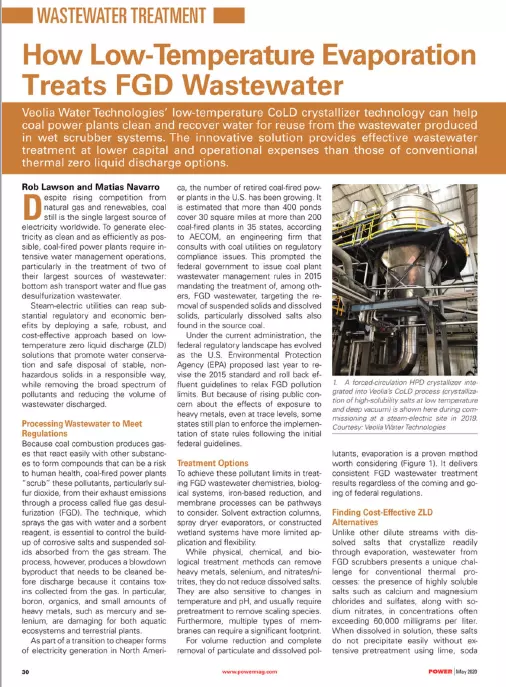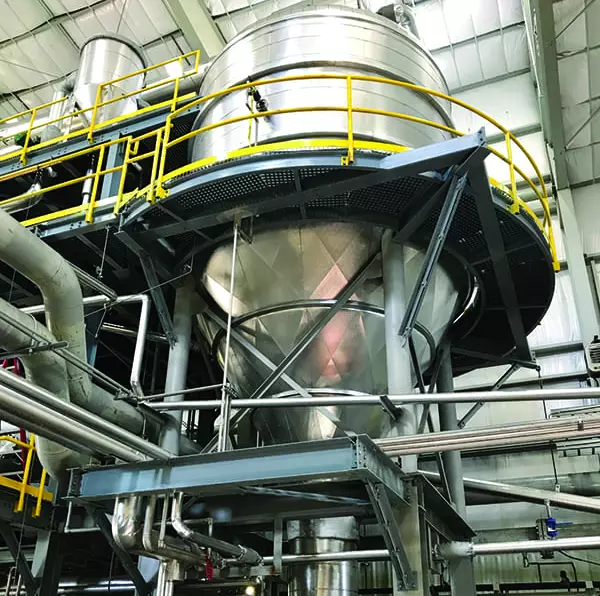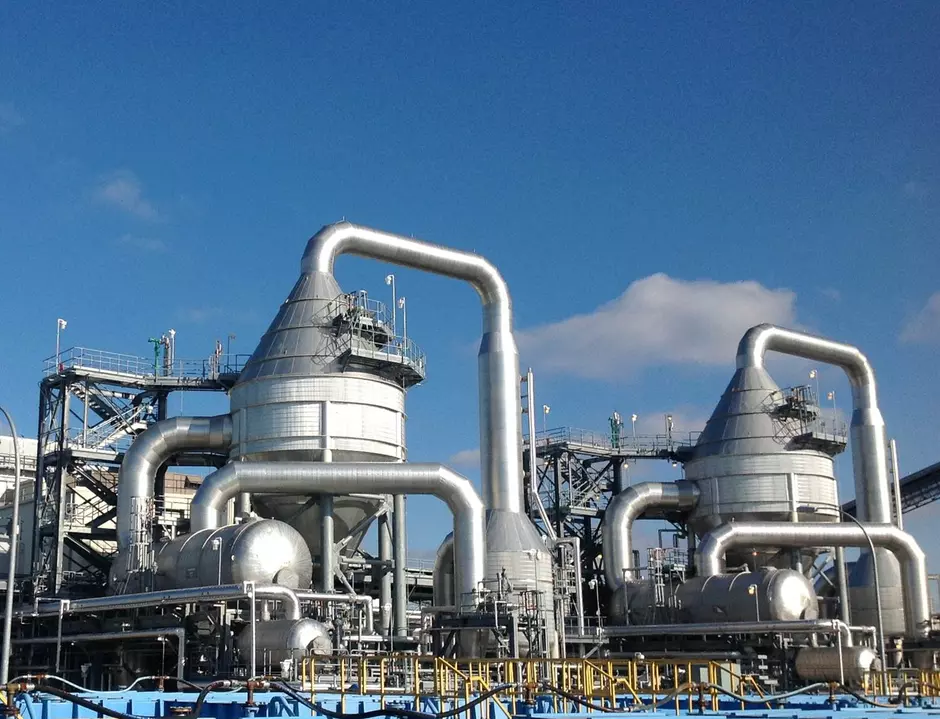How Low-Temperature Evaporation Treats FGD Wastewater
Despite rising competition from natural gas and renewables, coal still is the single largest source of electricity worldwide. To generate electricity as clean and as efficiently as possible, coal-fired power plants require intensive water management operations, particularly in the treatment of two of their largest sources of wastewater: bottom ash transport water and flue gas desulfurization wastewater.
Steam-electric utilities can reap substantial regulatory and economic benefits by deploying a safe, robust, and cost-effective approach based on low-temperature zero liquid discharge (ZLD) solutions that promote water conservation and safe disposal of stable, non-hazardous solids in a responsible way, while removing the broad spectrum of pollutants and reducing the volume of wastewater discharged.
Processing Wastewater to Meet Regulations
Because coal combustion produces gases that react easily with other substances to form compounds that can be a risk to human health, coal-fired power plants “scrub” these pollutants, particularly sulfur dioxide, from their exhaust emissions through a process called flue gas desulfurization (FGD). The technique, which sprays the gas with water and a sorbent reagent, is essential to control the build-up of corrosive salts and suspended solids absorbed from the gas stream. The process, however, produces a blowdown byproduct that needs to be cleaned before discharge because it contains toxins collected from the gas. In particular, boron, organics, and small amounts of heavy metals, such as mercury and selenium, are damaging for both aquatic ecosystems and terrestrial plants.
As part of a transition to cheaper forms of electricity generation in North America, the number of retired coal-fired power plants in the U.S. has been growing. It is estimated that more than 400 ponds cover 30 square miles at more than 200 coal-fired plants in 35 states, according to AECOM, an engineering firm that consults with coal utilities on regulatory compliance issues. This prompted the federal government to issue coal plant wastewater management rules in 2015 mandating the treatment of, among others, FGD wastewater, targeting the removal of suspended solids and dissolved solids, particularly dissolved salts also found in the source coal.
Under the current administration, the federal regulatory landscape has evolved as the U.S. Environmental Protection Agency (EPA) proposed last year to revise the 2015 standard and roll back effluent guidelines to relax FGD pollution limits. But because of rising public concern about the effects of exposure to heavy metals, even at trace levels, some states still plan to enforce the implementation of state rules following the initial federal guidelines.

Veolia Water Technologies’ low-temperature CoLD crystallizer technology can help coal power plants clean and recover water for reuse from the wastewater produced in wet scrubber systems. The innovative solution provides effective wastewater treatment at lower capital and operational expenses than those of conventional thermal zero liquid discharge options.
Treatment Options
To achieve these pollutant limits in treating FGD wastewater chemistries, biological systems, iron-based reduction, and membrane processes can be pathways to consider. Solvent extraction columns, spray dryer evaporators, or constructed wetland systems have more limited application and flexibility.
While physical, chemical, and biological treatment methods can remove heavy metals, selenium, and nitrates/nitrites, they do not reduce dissolved salts. They are also sensitive to changes in temperature and pH, and usually require pretreatment to remove scaling species. Furthermore, multiple types of membranes can require a significant footprint.
For volume reduction and complete removal of particulate and dissolved pollutants, evaporation is a proven method worth considering (Figure 1). It delivers consistent FGD wastewater treatment results regardless of the coming and going of federal regulations.

Figure 1: A forced-circulation HPD crystallizer integrated into Veolia’s CoLD process (crystallization of high-solubility salts at low temperature and deep vacuum) is shown here during commissioning at a steam-electric site in 2019.
Finding Cost-Effective ZLD Alternatives
Unlike other dilute streams with dissolved salts that crystallize readily through evaporation, wastewater from FGD scrubbers presents a unique challenge for conventional thermal processes: the presence of highly soluble salts such as calcium and magnesium chlorides and sulfates, along with sodium nitrates, in concentrations often exceeding 60,000 milligrams per liter. When dissolved in solution, these salts do not precipitate easily without extensive pretreatment using lime, soda ash, and other chemicals to replace the calcium and magnesium ions in the wastewater with sodium ions so that a crystalline solid can be produced and ZLD can be achieved. To overcome this situation, conventional thermal facilities require coagulation/flocculation, clarification, and/or filtration, which have considerable operating costs because of their intensive sludge dewatering and disposal expenses.
When water vaporizes and salts are further concentrated in conventional thermal processes, the energy to achieve ZLD increases because of the higher boiling temperature to reach the salts’ solubility limit. As low scrubber wastewater temperature drives a reduction in the solubility and boiling temperature of high-solubility salts, it became apparent that an operation under lower temperatures concentrates the solution, while precipitating dissolved solids to the point of crystal formation. In addition, by operating at low pressures under vacuum, the boiling temperature of the solution is reduced from that at atmospheric pressure and a solid can be obtained at a relatively low concentration.
Simple, low-temperature crystallization processes such as Veolia’s CoLD (crystallization of high-solubility salts at low temperature and deep vacuum) take advantage of this (Figure 2). Through the use of an energy-saving, closed-cycle heat pump, the system supplies the heat required to boil the solution and the cooling necessary to condense the water vapor. The integration of a solids-dewatering device such as a centrifuge or a filter press maximizes crystal recovery by optimizing the residual moisture of the wet cake to achieve the maximum waste volume reduction and solids collection efficiency.

Less Risk, More Water
One of the largest coal plants west of the Mississippi River has used unlined surface ponds to store FGD wastewater since the mid-1970s. The operator, one of the largest privately held American energy and power generation companies, has decided to turn offline older operating units, as utilities in the U.S. Northwest seek to remove coal from their power portfolios because of climate change concerns.
To comply with environmental mandates resulting from the partial retirement, Veolia Water Technologies was selected to design and supply a ZLD system integrating a falling film evaporator that will feed a concentrated brine to a CoLD crystallizer to treat 500 million gallons of FGD wastewater. The falling film evaporator can recover up to 90% of the water and keeps energy consumption low thanks to the use of electrical mechanical vapor compression (MVC), which drives higher pressure on the recovered vapors to provide the heating source applied to the circulating brine.
The system will reclaim FGD wastewater and produce two outputs: a dry, stable waste of crystalline solids for landfill disposal and a high-purity distillate with very low dissolved solids, sodium, chloride, sulfate, hardness, and silica. The clean water will be used for various processes within the power plant, minimizing withdrawals of surface freshwater.
Proven and Reliable Systems
For many years, scrubbers have been the best technology to keep the emissions of coal plants under control. Today, low-temperature evaporation systems are the best technology to treat the FGD wastewaters collected in those scrubbers.
Technologies such as Veolia’s CoLD provide effective treatment at lower capital and operational expenses than those of conventional thermal ZLD options (Figure 3). Lifecycle costs are reduced because pretreatment steps are not necessary, and chemical use and sludge generation are minimized. Further, the use of a heat pump eliminates the need for steam and keeps low energy requirements to evaporate water.

Despite their recent downward trajectory and challenging economic viability, coal plants have been the backbone of the U.S. energy supply for more than a century and still deliver reliable power to many electricity markets. To maximize competitiveness against other sources, steam-electric utilities must invest in optimal FGD wastewater management. It not only enhances operations today but it avoids the potential for costly environmental liabilities in the long run.
Remedial measures to restore ecological damage resulting from uncontrolled leaching or toxic spills are very expensive. Treating FGD wastewater with reliability and flexibility should not be. By managing the risks associated with FGD wastewater on the utility’s property, forward-looking producers can control operating costs and extend more profitable operations through the end of their plants’ economic lives, with a focus on protecting human health and the environment.
Originally published in POWER, May 2020.


